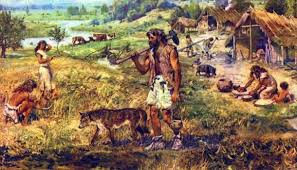The first Homo Sapiens migrated out of Africa about 100,000 years ago spreading far and wide finding themselves and their ancestors around the world, however the Americas were not settles until about 14,000 years ago. This had intrigued Anthropologist and Archaeologist in the early 2000s leading to a huge debate of when did Homo Sapiens arrive in the Americas. Currently the widely held view is that Humans crossed over the Beringian land bridge somewhere between 20,000 and 11,500 which is known as the Clovis period of settlement. However recent archaeological digs have began to shed new light that possibly people arrived in the Americas long before the Clovis hunters arrived. The first archaeological dig to support this idea was the Monte Verde II dig site in Chile which found that humans had settled there as long as 16,500 BCE which is 3,000 years before the accepted Clovis view of 13,500 BCE. However Monte Verde II has been hit with criticism and backlash as people believe there is not enough evidence to support this. However a new dig site has popped up in the Pampas Region of Argentina supporting this claim of humans were here before the Clovis hunters.
Research:
The new site is called Arroyo Seco 2, here the researchers led by Gustavo Politis from CONICET and the Universidad Nacional del Centro de la Provincia de Buenos Aires, began to excavate bone remains from extinct species and animal bones that had fractures caused by human tools. Politis used radiocarbon dating to determine the age of the bones found and analyzed the bones under microscopes to get a better picture. The analysis revealed bountiful information including the presence of limb bones from the extinct animals which implies that the human activity of transporting and depositing animal bodies for consumption at this temporary camp. They also found the bones in a centralized area also implying that the people there had designated a certain area for butchering the animals and another for cooking the animal. The microscopic analyzing saw the fractures were probably caused by stone tools as they had the same pattern as other stone tools when used on animal bones. Finally the remains of the bones were dated anywhere from 14,064 to 13,068 years ago which Politis hypothesizes that the humans must’ve occupied the area during the time frame.
Conclusions:
Because of the Arroyo Seco 2 dig site, Monte Verde II was garnered with a lot of supporting evidence from Politis. But more importantly it sheds even more evidence, and tears down the idea of “Clovis first,” that perhaps Humans arrived in the Americas a lot sooner than 13,500 years ago and that the place first settled was not North America but indeed South America. This also shows that Humans were traveling south during the last glacial period, Last Glacial Maximum, which ended about 20,000 years ago. Finally while this evidence might not directly outright say that there was no human intervention it is strongly founded that humans indeed had an impact on the area. Much like global warming there might not be direct evidence that Humans are causing Global Warming but it is backed with heavy evidence that we are indeed playing a part in Global Warming.
My Thoughts:
If we can prove ourselves wrong about when humans first settled the Americas then what else could we possibly uncover by doing more excavations around the world. Maybe the idea that Humans developed in Africa and migrated around the world from there might not be true, there is still so much to discover about our beginnings and our ancestors and the only place to look is in the ground.
https://www.sciencedaily.com/releases/2016/09/160929133725.htm
http://journals.plos.org/plosone/article?id=10.1371/journal.pone.0162870#sec001
http://www.bradshawfoundation.com/america/clovis_first/















